Spectacular new Crab Nebula images close in on its final secrets
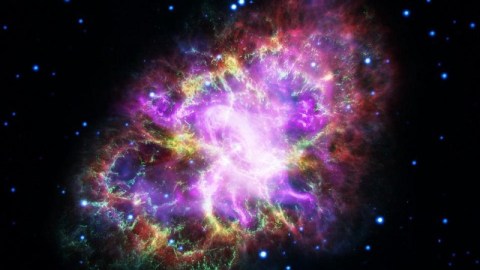
Five independent images point to an incredible, single story, but the mystery of how it was created still remains.
“The origin and evolution of life are connected in the most intimate way with the origin and evolution of the stars.” –Carl Sagan
Thousands of light years away, the death throes of a massive star culminated in a catastrophic supernova explosion. In the year 1054, that light finally made it to Earth, outshining all the stars and planets in the sky and becoming visible during the day. Some 700 years later, after the invention of the telescope, astronomers identified a faint, fuzzy blob in the sky where that star once resided: the Crab Nebula. Over the centuries, improved historical records, alongside new measurements, observations, and multi-wavelength studies led us to understand the story of this fantastic object as never before. Earlier this week, the last piece of the puzzle — a high-resolution image at the longest wavelengths possible — finally came together in beautiful, spectacular fashion.
What we see today is the inevitable fate of a star that was born with about 8-to-15 times the mass of our Sun. Unlike the ten billion years our Sun will live before running out of fuel in its core, these much larger ones are hotter, bluer, more luminous, and burn through their fuel much more quickly. After only millions of years, these stars will run out of fuel in their cores, swell to giant sizes, and then begin a chain reaction where they burn helium into carbon, carbon into oxygen, oxygen into silicon and sulphur, and then silicon and sulphur into iron, nickel and cobalt.
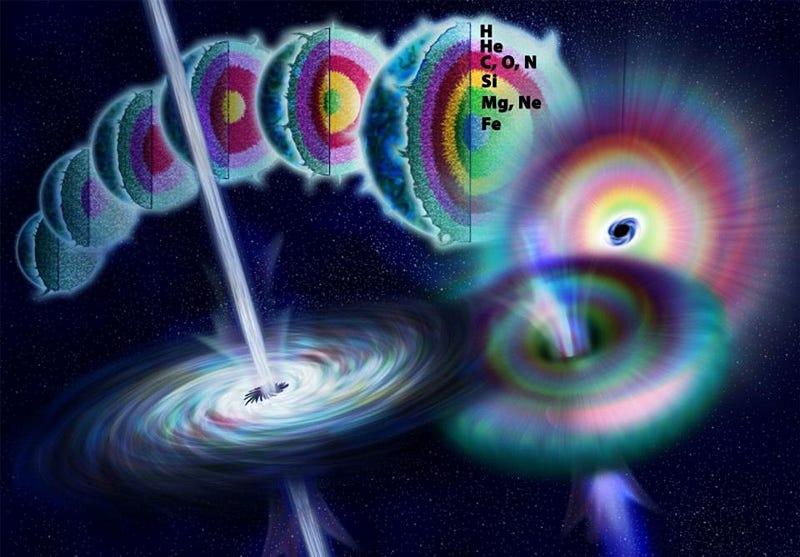
But when you reach these heavy metals, there’s nowhere left to go; creating anything heavier actually costs you energy, rather than releasing energy, when you make it. Instead, with no more fusion reactions taking place, there’s not enough radiation to hold the star’s core up against gravitational collapse, and the interior implodes. This creates a runaway fusion reaction, turning the atomic nuclei in the core into a ball of neutrons, while blowing off the outer layers in a spectacular explosion known as a supernova.
https://www.youtube.com/watch?v=eE8QkBlyf5k
That supernova became visible all across the world in the year 1054, and although it slowly faded from view, its legacy remains illuminated. The most common view we take of it is in the optical (visible light) portion of the spectrum, where we can see the signatures of a variety of different elements. These signatures showcase the intricate structures of the different layers of the star that have been turned inside-out by the explosion, revealed most magnificently by the Hubble Space Telescope. Although it’s less than a thousand years old, it already has a diameter of 11 light years, and is presently expanding at 1500 kilometers-per-second: some 0.5% the speed of light.
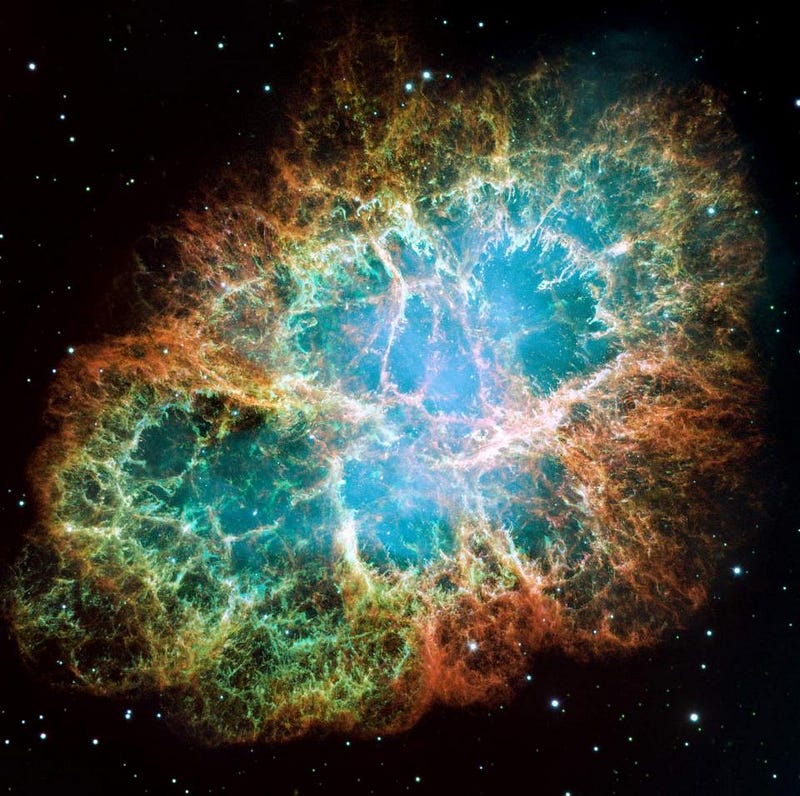
The core of the star, however, remains a ball of neutrons, spinning rapidly and accelerating the matter near it. This class of object is known as a pulsar, and it contains some of the strongest magnetic fields of any object in the known Universe. The neutron star rotates once every 33 milliseconds, causing the emission of radiation across the electromagnetic spectrum, but most prominently in X-rays. At only 6,500 light-years distant, the Chandra X-ray observatory can not only make out the fine detail of this object, but can image the surrounding structures changing over time.
The majority of light coming from this object is far more energetic than what the Sun emits. In fact, the Crab Nebula is the brightest X-ray source above a certain energy in the entire sky, and the heated material surrounding the central star emits a tremendous amount of ultraviolet light. Overall, this one supernova remnant has 75,000 times the luminosity of our Sun. If the supernova had occurred at a distance of 50 light years instead of 6,500 light years, it’s arguable that it could have eradicated all life on this planet.
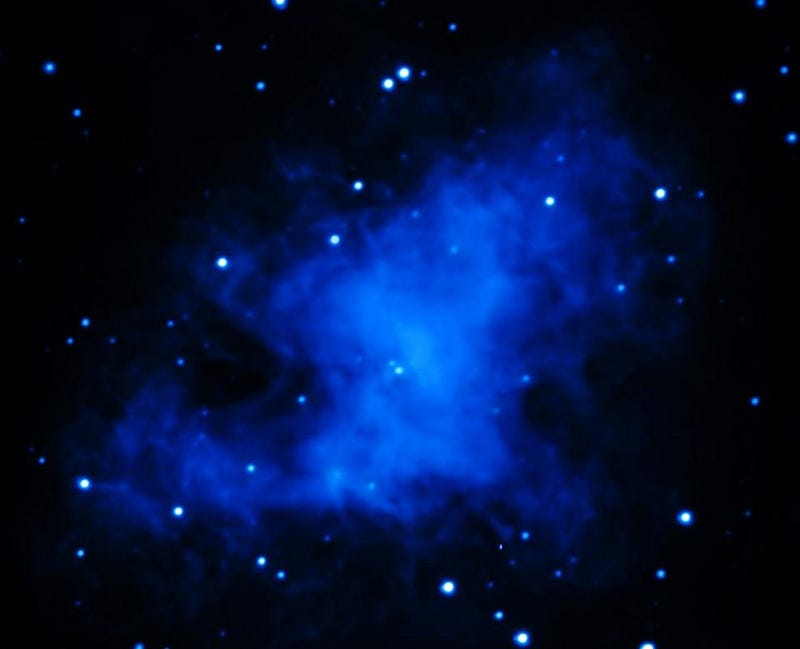
If we look to lower energies, however, the filamentary structures seen in the optical barely appear anymore. Instead, at infrared wavelengths, we primarily see the effects of free electrons in this ionized nebula. Below, the red lines trace out those filaments, but the overwhelming majority of the radiation comes from these ionized electrons crashing into the atoms and ions, producing a diffuse, warm glow.
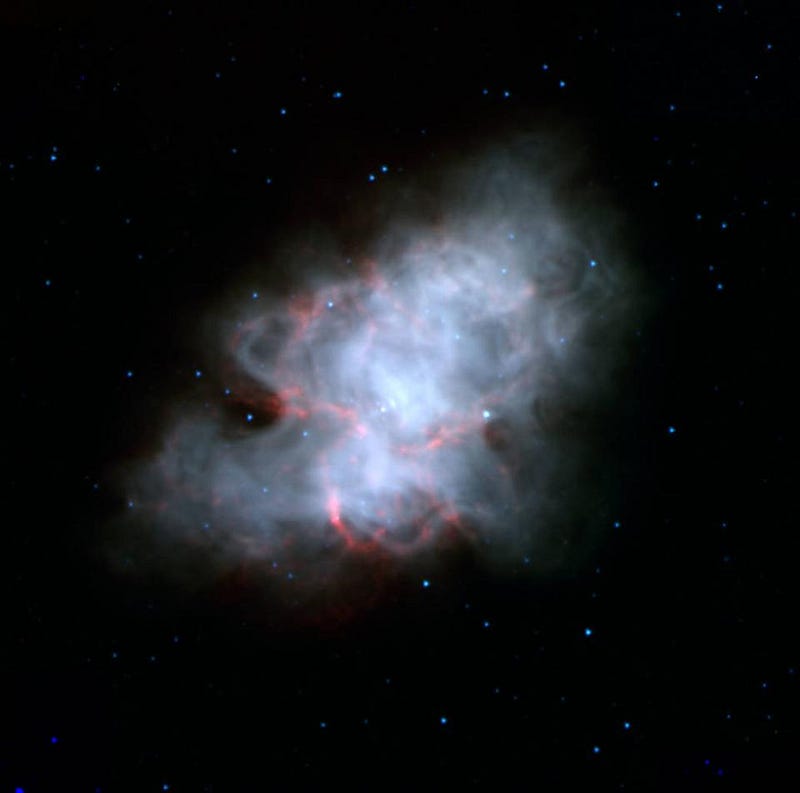
But the longest wavelengths and lowest energies, seen in the radio, are the last component of this multiwavelength view to be imaged. The Very Large Array (VLA), one of the most powerful conglomerations of radio telescopes in the world, used the full complement of its tools to image the Crab Nebula to never-before-seen accuracy. The result is an image as spectacular as any other view we’ve detected, and yet the science behind it is so much more revealing.

Perhaps surprisingly, some of the features which only exist at the highest energies also exist at the lowest energies! The interactions between fast-moving particles and magnetic fields result in radiation, and can be seen near the center of the image. Yet who would have thought there would be similarities between the radio and the X-ray images, in this regard, yet gaps in the infrared, visible and ultraviolet portions? Gloria Dubner, the scientific lead on the most recent set of observations, said the following:
Comparing these new images, made at different wavelengths, is providing us with a wealth of new detail about the Crab Nebula. Though the Crab has been studied extensively for years, we still have much to learn about it.
Additionally, the ejected jets of material and ionized loops are on display in this latest, long-wavelength image. By combining them all into one spectacular composite, the true majesty of the Crab Nebula is on display.
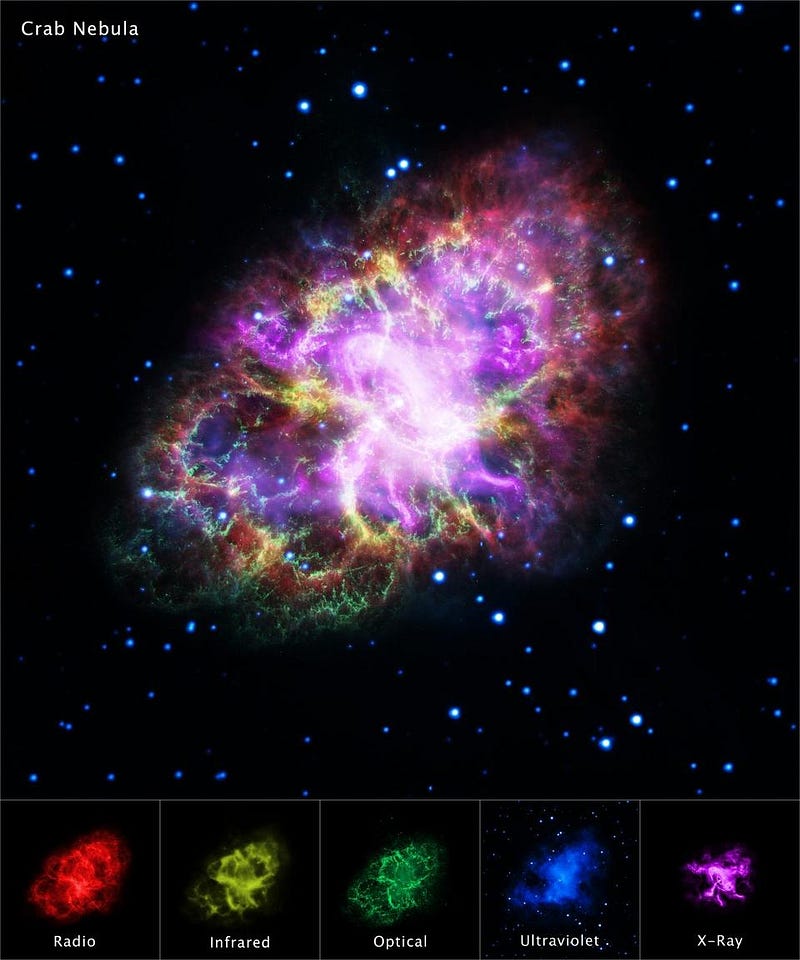
However, one significant problem remains with the nebula: the masses don’t add up. By looking in all these different wavelengths, we can calculate/estimate the mass of the Crab Nebula, and arrive at a figure of about two-to-five solar masses. The neutron star at the core is likely no more than two solar masses, and yet it should be impossible to have a supernova unless your progenitor star is at least eight times the mass of the Sun. So where did that extra mass go? There’s no shell around the nebula, and we’ve looked at length for one. Instead, our models of something — the nebula, the neutron star, or the supernova itself — must have a flaw in it somewhere. The data is better than it’s ever been; now it’s time for scientists to put those final pieces of this great cosmic puzzle together!
Ethan Siegel is the author of Beyond the Galaxy and Treknology. You can pre-order his third book, currently in development: the Encyclopaedia Cosmologica.





